Securing payments is a critical aspect of ensuring the financial stability of sustainable development consultancies. The article delves into the intricacies of debt recovery through a three-phase recovery system, evaluating the viability of debt recovery, understanding financial commitments, making informed decisions on legal actions, and the importance of communication in the debt collection process. These components are essential for consultancies to safeguard their financial interests and continue contributing to sustainable development initiatives.
Key Takeaways
- A three-phase recovery system is employed to maximize the chances of debt recovery, starting with skip tracing and escalating to legal action if necessary.
- Evaluating the debtor’s assets and the likelihood of recovery is crucial in determining whether to proceed with litigation or standard collection methods.
- Understanding the financial commitments involved in debt recovery, including upfront legal costs and contingency rates, is essential for sustainable development consultancies.
- Decision-making in legal actions should consider the need for litigation, potential costs and outcomes, and alternative options if litigation fails.
- Effective communication strategies can enhance debt collection efforts, but consultancies must be prepared to transition to legal action when necessary.
Understanding the Three-Phase Recovery System
Phase One: Initial Contact and Skip Tracing
The payment recovery process begins swiftly within 24 hours of account placement. Initial efforts are crucial, involving a multi-channel approach to establish contact with the debtor. This phase is characterized by:
- Sending the first of four letters via US Mail.
- Comprehensive skip tracing to uncover the most current financial and contact information.
- Persistent attempts to engage the debtor through phone calls, emails, text messages, and faxes.
Daily contact attempts are made during the first critical 30 to 60 days. If these efforts do not yield a resolution, the case escalates to Phase Two, engaging our network of affiliated attorneys.
The goal is clear: to secure a resolution without the need for legal intervention. However, if the debtor remains unresponsive, the groundwork laid here paves the way for a seamless transition to more assertive legal measures.
Phase Two: Escalation to Affiliated Attorneys
When initial recovery efforts falter, the case escalates to our network of affiliated attorneys. Legal prowess intensifies the pressure on debtors, signaling the seriousness of the situation. Attorneys draft demand letters and engage in persistent communication, aiming to resolve the debt without court intervention.
- Immediate drafting of demand letters on law firm letterhead
- Persistent debtor contact via phone by attorney or staff
- Evaluation of case progress and recommendation for next steps
The transition to legal action marks a pivotal moment in the Three-phase Recovery System, underscoring the commitment to recover your funds.
Should these efforts remain unfruitful, a strategic decision awaits: to litigate or not. This choice hinges on the debtor’s assets and the likelihood of recovery, a critical juncture in the pursuit of your financial justice.
Phase Three: Litigation and Case Closure Recommendations
At the crossroads of litigation and closure, the path taken hinges on the debtor’s asset investigation. If recovery seems unlikely, case closure is advised—a relief with no financial burden to you. Conversely, choosing litigation triggers upfront legal costs, typically $600-$700, based on jurisdiction.
Our rates are structured to align with your claim’s volume and age:
-
For 1-9 claims:
- Under 1 year: 30%
- Over 1 year: 40%
- Under $1000: 50%
- With attorney: 50%
-
For 10+ claims:
- Under 1 year: 27%
- Over 1 year: 35%
- Under $1000: 40%
- With attorney: 50%
Should litigation not yield results, the case concludes, absolving you of further fees. This decisive moment in the 3-phase Recovery System is crucial for securing payments for sustainable development consultancy, with recommendations for recovery, rates based on claims and age, and legal action considerations.
Evaluating the Viability of Debt Recovery
Investigating Debtor’s Assets and Recovery Likelihood
Before initiating recovery efforts, a meticulous assessment of the debtor’s financial standing is paramount. Identifying tangible assets and evaluating solvency sets the stage for a realistic approach to debt recovery. The process involves:
- Reviewing public records for property ownership
- Analyzing bank account statuses
- Investigating employment and income sources
The goal is to gauge the feasibility of recovery and to strategize accordingly, minimizing futile attempts and focusing resources where they have the highest chance of success.
Determining the likelihood of recovery is not just about the presence of assets but also their accessibility and the legal framework governing them. A debtor’s asset profile guides the decision between standard collection methods and the pursuit of litigation.
Determining the Course of Action: Litigation or Standard Collection
When faced with outstanding debts, the decision between pursuing litigation or continuing with standard collection efforts is pivotal. Debt collection involves technology, collaboration, and legal action, with costs for legal action typically ranging from $600 to $700. Strategic decisions on litigation should be based on the recovery potential of the debt.
The choice hinges on a thorough investigation of the debtor’s assets and the likelihood of recovery. If the potential for recovery is low, standard collection methods may be more cost-effective.
The following table outlines the contingency rates based on claim volume and account details:
| Claims Submitted | Account Age | Collection Rate |
|---|---|---|
| 1-9 | < 1 year | 30% |
| 1-9 | > 1 year | 40% |
| 1-9 | < $1000 | 50% |
| 10+ | < 1 year | 27% |
| 10+ | > 1 year | 35% |
In the event of unsuccessful litigation, the case will be closed without further financial obligation to the firm or affiliated attorneys. This ensures that clients are not burdened with additional costs after an unsuccessful recovery attempt.
Closure of the Case: Conditions and Financial Implications
The endgame of debt recovery hinges on a thorough investigation of the debtor’s financial status. Two paths emerge: case closure or litigation. If recovery seems unlikely, we advise to close the case, incurring no costs to you. Conversely, choosing litigation means upfront legal fees, typically $600-$700, are due.
Our contingency rates are tailored to claim volume and age. For instance:
- Accounts under 1 year: 30% (1-9 claims) or 27% (10+ claims)
- Accounts over 1 year: 40% (1-9 claims) or 35% (10+ claims)
- Accounts under $1000: 50% regardless of claim count
- Accounts requiring attorney involvement: 50% always
Should litigation not yield results, the case closes with no further financial obligation. This ensures a risk-managed approach to debt recovery, aligning our interests with your success.
Financial Commitments and Contingency Rates
Upfront Legal Costs for Litigation
When considering litigation, understanding upfront legal costs is essential. These costs cover court fees, filing charges, and other related expenses. Typically, fees range from $600 to $700, varying by jurisdiction.
Deciding to litigate means committing to these costs, which are necessary to initiate legal proceedings.
Our firm offers competitive collection rates, which are tailored based on the claim’s nature and age. Here’s a quick breakdown of our fee structure:
-
For 1-9 claims:
- Accounts under 1 year: 30% of the amount collected.
- Accounts over 1 year: 40% of the amount collected.
- Accounts under $1000: 50% of the amount collected.
- Accounts placed with an attorney: 50% of the amount collected.
-
For 10 or more claims:
- Accounts under 1 year: 27% of the amount collected.
- Accounts over 1 year: 35% of the amount collected.
- Accounts under $1000: 40% of the amount collected.
- Accounts placed with an attorney: 50% of the amount collected.
It’s crucial to weigh these costs against the potential recovery to make an informed financial decision.
Competitive Collection Rates Based on Claim Volume
Securing payments in sustainable development consultancy requires a nuanced approach to debt recovery, particularly when dealing with biodiversity research contracts. Volume discounts are a key strategy in this sector, incentivizing clients to consolidate their claims for more favorable rates. Our tiered pricing structure reflects the quantity of claims, with special considerations for accounts under $1000 and those requiring attorney intervention.
| Number of Claims | Accounts < 1 Year | Accounts > 1 Year | Accounts < $1000 | Attorney-Placed Accounts |
|---|---|---|---|---|
| 1-9 | 30% | 40% | 50% | 50% |
| 10+ | 27% | 35% | 40% | 50% |
The financial viability of environmental projects is paramount. Tailored collection rates ensure that the recovery process aligns with the project’s sustainability goals.
It’s essential to weigh the financial implications of debt recovery against the potential gains. Our competitive rates are designed to maximize recovery while maintaining the financial health of your consultancy.
Percentage Fees for Different Account Ages and Amounts
The complexity of debt recovery for sustainable development consultancy necessitates a nuanced approach to collection rates. Collection rates for unpaid environmental consultancy fees vary, influenced by the age of the account and the total amount due. Younger accounts typically incur lower fees, reflecting the higher likelihood of successful collection.
Age and amount are pivotal in determining the percentage fees. Here’s a concise breakdown:
- Accounts under 1 year: 27% to 30% of the amount collected.
- Accounts over 1 year: 35% to 40% of the amount collected.
- Accounts under $1000.00: 40% to 50% of the amount collected.
- Accounts requiring legal action: A flat rate of 50% of the amount collected.
The fee structure is designed to balance the risk and effort involved in the recovery process. It’s essential for consultants to understand these rates for effective financial planning and policy advisory.
The tiered fee system encourages early intervention and resolution of debts, aligning with the consultancy’s goal of sustainable financial management.
Decision Making in Legal Action for Debt Recovery
Assessing the Need for Litigation
Before proceeding with legal action, a meticulous evaluation of the debt recovery process is crucial. Assessing litigation viability is the first step in determining whether to engage in a court battle. Upfront legal costs, often ranging from $600 to $700, must be considered alongside the potential for debt recovery.
Deciding to litigate is not just about the potential to recover funds; it’s about making a strategic choice.
Structured collection rates and communication strategies also play a pivotal role in the decision-making process. Here’s a quick breakdown of contingency rates based on claim volume:
- For 1-9 claims:
- Accounts under 1 year: 30%
- Accounts over 1 year: 40%
- Accounts under $1000: 50%
- Accounts with an attorney: 50%
- For 10+ claims:
- Accounts under 1 year: 27%
- Accounts over 1 year: 35%
- Accounts under $1000: 40%
- Accounts with an attorney: 50%
The choice to pursue litigation should be informed by a comprehensive understanding of these factors, ensuring that any legal action aligns with the overall goal of successful debt resolution.
Understanding the Costs and Potential Outcomes
When considering litigation for debt recovery, it’s crucial to weigh the financial implications against the potential gains. Upfront legal costs, such as court fees and filing charges, typically range from $600 to $700, depending on the debtor’s jurisdiction. These are necessary expenditures to initiate legal proceedings.
Recovery rates vary based on several factors, including the age of the account and the total number of claims. For instance:
- Accounts under 1 year: 30% (1-9 claims) or 27% (10+ claims) of the amount collected.
- Accounts over 1 year: 40% (1-9 claims) or 35% (10+ claims) of the amount collected.
- Accounts under $1000: 50% of the amount collected, regardless of claim volume.
The decision to litigate should be informed by a clear understanding of these costs and the realistic likelihood of debt recovery. If litigation is deemed unfeasible, standard collection activities can continue, or the case may be recommended for closure with no additional fees owed.
Remember, if litigation attempts fail, the case will be closed, and you will not be responsible for any further payments to the firm or affiliated attorneys. This contingency-based approach aligns the interests of all parties towards a successful resolution.
Options Available if Litigation Attempts Fail
When litigation does not yield the desired results, alternative strategies must be considered. Options for debt recovery without litigation include negotiation, payment plans, mediation, and debt selling. Each option should be weighed carefully, taking into account the costs versus the recovery potential, the impact on client relationships, and the fee structures involved.
Mediation can serve as a cost-effective and less adversarial approach, often leading to a mutually acceptable resolution. Payment plans may also be arranged, providing a structured method for debtors to fulfill their obligations over time. In some cases, selling the debt to a third party may be the most viable solution, albeit typically at a reduced rate.
It is crucial to assess the feasibility of these alternatives and choose the path that aligns with the consultancy’s financial goals and ethical standards.
The following list outlines the key considerations when litigation is not successful:
- Evaluate the debtor’s willingness to negotiate and their financial capacity.
- Determine the appropriateness of a payment plan based on the debt amount and debtor’s situation.
- Consider mediation to avoid further legal costs and to expedite resolution.
- Explore the option of selling the debt, recognizing the potential loss involved.
The Role of Communication in Debt Collection
Utilizing Multiple Channels for Debtor Contact
In the pursuit of overdue payments, a cost-benefit analysis is crucial. Employing a multichannel approach maximizes contact efficiency and increases the likelihood of successful debt recovery. Channels include:
- Phone calls
- Emails
- Text messages
- Faxes
- Traditional mail
Each channel serves a strategic purpose, tailored to the debtor’s responsiveness and the nature of the debt. It’s essential to navigate cultural differences when dealing with international debt recovery, ensuring communication is both respectful and effective.
The intensity of efforts escalates over time, from friendly reminders to more assertive demands, always within the bounds of professionalism and legal compliance.
Attorneys play a pivotal role in this process, especially when standard collection efforts falter. Their involvement often signals a shift in strategy, from communication to potential legal action, underscoring the seriousness of the situation to the debtor.
Frequency and Intensity of Collection Efforts
The cadence of outreach in debt collection is critical. Early and consistent contact can significantly increase the likelihood of successful recovery. A strategic approach to the frequency and intensity of collection efforts ensures that debtors are reminded of their obligations without feeling harassed.
Persistence is key, but so is tact. A balance must be struck between assertive follow-ups and maintaining a professional demeanor. Here’s a snapshot of a typical communication timeline:
- Day 1-30: Daily attempts via phone, email, and mail.
- Day 31-60: Follow-up every other day, escalating the tone.
- Day 61+: Weekly contacts, with the option to proceed to legal action.
The goal is to engage debtors in a dialogue that leads to a resolution, not to alienate them. This approach aligns with best practices for debt collection in international environmental services, which emphasize clear terms, effective communication, and the use of technology for efficiency.
Transition from Communication to Legal Action
When persistent communication fails to yield results, the shift to legal action becomes a necessary escalation. The transition is a critical juncture, where the choice to litigate signals a firm stance on debt recovery. It’s essential to understand that this step involves additional costs and a commitment to a legal process that may extend over time.
Litigation is not a step to be taken lightly. It requires a clear assessment of the debtor’s ability to pay and the potential return on investment. The following table outlines the contingency rates based on claim volume and account details:
| Claims Submitted | Account Age | Contingency Rate |
|---|---|---|
| 1-9 | < 1 year | 30% |
| 1-9 | > 1 year | 40% |
| 1-9 | < $1000 | 50% |
| 10+ | < 1 year | 27% |
| 10+ | > 1 year | 35% |
| 10+ | < $1000 | 40% |
Deciding to proceed with litigation is a definitive move towards resolution. It’s a path chosen when all other avenues have been exhausted and the creditor is prepared to enforce their rights through the courts.
The decision to litigate should be made with a full understanding of the financial implications and the likelihood of successful debt recovery. It’s a calculated risk, but one that may ultimately lead to the closure and recovery of outstanding debts.
Effective communication is the cornerstone of successful debt collection. At Debt Collectors International, we understand the delicate balance between assertiveness and empathy. Our expert collectors are trained in dispute resolution and negotiation, ensuring that your debts are recovered in a professional and respectful manner. Don’t let overdue accounts disrupt your cash flow. Visit our website to learn more about our tailored debt collection solutions and take the first step towards reclaiming your finances. Your peace of mind is just a click away.
Frequently Asked Questions
What happens during Phase Three if the possibility of recovery is not likely?
If, after investigating the case and the debtor’s assets, recovery is deemed unlikely, we recommend case closure without any financial obligation to our firm or our affiliated attorney.
What are the upfront legal costs if we decide to proceed with litigation?
Upfront legal costs such as court costs and filing fees typically range from $600.00 to $700.00, depending on the debtor’s jurisdiction.
What are the contingency rates for debt collection?
Rates vary based on the number of claims and the age and amount of the accounts. For example, accounts under 1 year in age are charged 30% of the amount collected for 1-9 claims, and 27% for 10 or more claims.
What actions are taken in Phase One of the Recovery System?
Within 24 hours of placing an account, we send letters, skip-trace, and attempt to contact the debtor using various communication methods. Daily attempts are made for the first 30 to 60 days before moving to Phase Two.
What can I expect when my case is forwarded to an affiliated attorney in Phase Two?
The attorney will draft and send letters demanding payment and will also attempt to contact the debtor by telephone. If these efforts fail, we will advise you on the next steps.
If litigation attempts fail, what financial obligations do I have to the firm or the affiliated attorney?
If our attempts to collect via litigation fail, you will owe nothing to our firm or our affiliated attorney, and the case will be closed.





